Roof energy efficiency is often overlooked, but it’s one of the easiest ways to start saving money. It doesn’t matter if you’re upgrading an existing roof or building from scratch—you can still make your home energy efficient without a total overhaul. And it’s not just homes! Commercial buildings can get in on the action, too. Maupin Roofing has helped plenty of folks improve residential roofing projects with energy in mind, so let us help you get started.
What Is an Energy-Efficient Roof?

An energy-efficient roof is one that helps your home stay cooler in the summer and warmer in colder climates without overworking your air conditioning or heating units. It’s a combination of smart materials, good design, insulation, and proper ventilation. If your roof reflects sunlight, has proper insulation underneath, and moves air the way it’s supposed to, you’re already on the right track.
In other words, most energy-efficient roofs are built in a way that helps your HVAC units do less, so your utility bills are also significantly lower.
The Perks of Upgrading to Energy-Efficient Materials

An energy-efficient roof is one that helps your home stay cooler in the summer and warmer in colder climates without overworking your air conditioning or heating units. It’s a combination of smart materials, good design, insulation, and proper ventilation. If your roof reflects sunlight, has proper insulation underneath, and moves air the way it’s supposed to, you’re already on the right track.
In other words, most energy-efficient roofs are built in a way that helps your HVAC units do less, so your utility bills are also significantly lower.
The Perks of Upgrading to Energy-Efficient Materials

In this section, we’re discussing the top picks if you’re looking for energy-efficient roof options that work well here in Oklahoma City.
Cool Asphalt Shingle Roofs
These are a lot like traditional asphalt shingles, but they usually come with specially coated granules that reflect heat and more sunlight. With these energy-efficient asphalt shingles, you’ll get the look of a traditional asphalt roof, but with better performance in hot weather. They’re the middle-ground choice because they’re budget-friendly, widely available, and a solid upgrade from basic shingles.
Additionally, if you go with a lighter color, that’s even better. This is because light-colored asphalt shingles naturally reflect more heat, while darker tones tend to absorb it.
Metal Roofs with Reflective Coating
Metal panels naturally work as a reflective roof. But add a reflective coating on top of that, and you’ve got a roof that can stay 50-60 degrees cooler than dark asphalt that tends to absorb heat a lot, especially on a sunny day.
They also last for decades, protecting the other parts of your system, including your roof deck and overall structural framework. In fact, some hit 50 years or more with minimal maintenance. And if storms roll through (which they will), metal roofing holds up against wind, hail, and debris better than a lot of other options.
Composite Roofing (Synthetic Slate or Shake)
If you want something that looks upscale but doesn’t cause your attic to heat up too much, composite roofing might just be the answer. These shingles are made from recycled material that look like slate, wood shake, or tile roofs, but without the weight or the heat absorption. Some brands offer high reflectivity ratings, too.
They’re on the expensive end of roofing materials, but they usually come with longer warranties and better durability, so they’re a smart long-term choice.
Concrete and Clay Tile
These aren’t very common in Oklahoma City, but they do pop up in more architecturally styled homes. Both clay and concrete tiles have natural thermal properties, meaning they absorb heat slowly and release it gradually, which helps reduce heat transfer inside.
They’re great at resisting fire and wind, and they can last for more than 50 years. The only catch is that they’re heavy, so your home has to be structurally ready for them.
Radiant Barrier Add-Ons
Not exactly a roofing material, but definitely worth mentioning. Radiant barriers are reflective sheets installed under the roof decking or along attic rafters. They bounce radiant heat back up, keeping your attic and living space cooler. They’re especially helpful as a retrofit if your existing roof isn’t quite ready for full replacement, but you still want some energy savings.
Cool Roof Coating
These are light colored roofs that are designed to reflect sunlight and have less heat absorption than a standard roof. What makes a roof “cool” is usually the coating, the color, and the material. Some are made from special membranes, while others are made with solar reflecting granules. In Oklahoma City, there are plenty of cool buildings around, since commercial properties tend to absorb heat more due to their size.
Green Roofs
Green roofs are basically a layer of vegetation that grows on top of a waterproof roofing system. They’re more common in big cities, but we’re starting to see a few pop up in Oklahoma City, too. The soil absorbs heat and, in turn, provides cooler air, and during heavy rainfall, green roofs can absorb water and reduce runoff.
Energy-Star Rated Roofs
The Energy Star program also certifies roof coatings and materials that meet strict standards for solar reflectance and thermal performance. To qualify, a roof has to reflect a significant portion of the sun’s heat away from the surface and into the atmosphere. Energy Star roofs come in a variety of traditional roofing materials: shingles, metal, tiles, and membranes. If you see that little blue Energy Star label on a roofing product, it means it’s been tested and rated to help you cut down your energy use.
Solar Panels
While not technically a roofing material, solar systems do mount on the roof (or come in solar roofing shingles) and absolutely impact your home’s energy profile. Installing solar panels can offset your electric bill because you can use the sun’s energy for your everyday needs rather than electricity from the grid. In fact, on sunny days, you might even generate more solar heat (energy) than you use, and feed it back into the grid.
What Is the Solar Reflectance Index?
The solar reflectance index (SRI) is basically a rating system that tells you how well a roofing material reflects sunlight and releases absorbed heat. Basically, it’s a number that shows how “cool” a roofing surface stays under the sun. This is usually done by organizations like the Cool Roof Rating Council.
It combines two things:
Solar reflectance (how much sunlight is bounced away instead of absorbed)
Thermal emittance (how well the material releases the heat it does absorb)
The higher the number, the cooler the roof stays. SRI is measured on a scale from 0-100, but some materials go even higher. A traditional black asphalt roof might have an SRI of 0-20. A bright white cool roof would have an SRI in the 80s or 90s.
You can use this table as a quick guide for SRI ratings:
SRI |
|
|---|---|
0-30 | These roofs get hot fast. Not ideal for energy savings in hot climates. |
30-60 | Better performance. Good middle ground if you’re working with design restrictions or want a darker roof with some reflectivity. |
60+ | Great at staying cool. These are high-performing materials for energy efficiency. |
Other Ways to Boost Energy Efficiency That Don’t Involve a Full Replacement

Not quite ready to replace your roofing materials just yet? No worries. You can try out these pro tips and see how well they work for you:
Make Sure Your Attic Is Properly Insulated
Your attic acts like a buffer zone between the roof and the rooms below. If it’s under-insulated or filled with gaps, heat from the roof just slides right through. Adding blown-in insulation or foam boards can slow that heat transfer way down.
Check That Your Roof Has Enough Ventilation
A good roofing system breathes. It brings in cooler air through soffit vents and pushes out hot air through ridge vents or gable vents. If your attic feels too hot, your roof might not be venting properly. Additionally, poor ventilation can also cause condensation, mold, and premature roof damage.
Seal Gaps and Cracks
Even small leaks around chimneys, skylights, or vents can pull in hot air and moisture. That messes with your indoor temperature and your roof’s efficiency. A professional inspection can find those problem spots and seal them up before they cost you.
Choose the Right Roof Color
Light-colored roofs reflect more sunlight. Even among the same material type, white, tan, or light gray shingles will perform better in hot weather than dark gray or black ones. If you’re re-roofing soon, consider a lighter color, even if you’re sticking with asphalt.
Consider the Roof Pitch and Shape
Low-slope roofs tend to absorb more heat because they’re exposed to more direct sunlight throughout the day. Steeper roofs can sometimes cool faster because of better airflow around them. Some roof shapes also create natural pockets of shade or airflow that reduce heat gain. If you’re building new or doing a full redesign, it’s worth factoring in.
Call Maupin Roofing for More Energy Savings
Are you ready to turn your roof energy-efficient and reduce energy costs? When it comes to roofing in OKC, Maupin Roofing is your top choice! Our professional team works on anything from commercial flat roofs to typical residential roofing systems, and our decades of experience make us extremely reliable.
Contact us today to schedule an appointment!
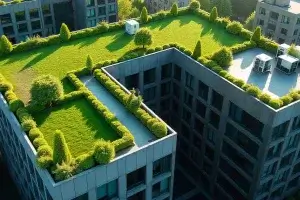
Green Roofs for Commercial Properties: Suitability, Types & Benefits
Green roofing systems replace or layer over traditional materials with soil, native plants, and engineered drainage systems that allow the roof to become a living
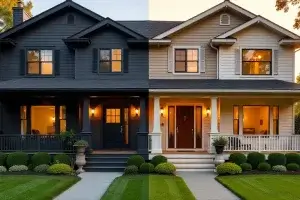
Boosting Curb Appeal with Exterior Colors: 12 Color Combos to Try
Before anyone notices your landscaping or your roofline, they notice color, which is why boosting curb appeal with exterior colors is such a powerful move.
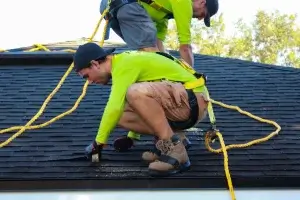
Residential Roof Maintenance Tips for Longevity
Your roof does more than cap off your home. It shields everything beneath it from Oklahoma’s heat, high winds, ice storms, and heavy rain. That’s
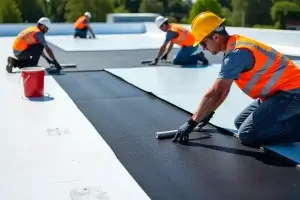
Modified Bitumen Roofs for Commercial Use: What to Know
Modified bitumen roofs for commercial use have become one of the most trusted options for flat and low-slope buildings for over a century. At Maupin
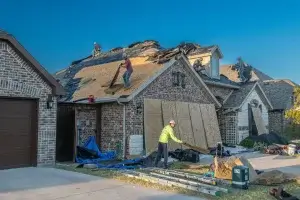
New Roof Installation Guide for Homeowners
As pros in the roofing industry, we know what really goes into a well-built roof and what can go wrong when corners are cut. A
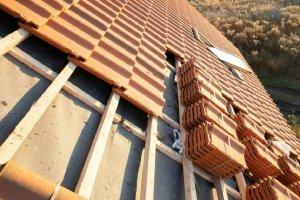
Best Time to Install a New Roof in Oklahoma
Something we often see is homeowners waiting too long to replace a worn-out roof, only to get caught in the middle of inclement weather or

